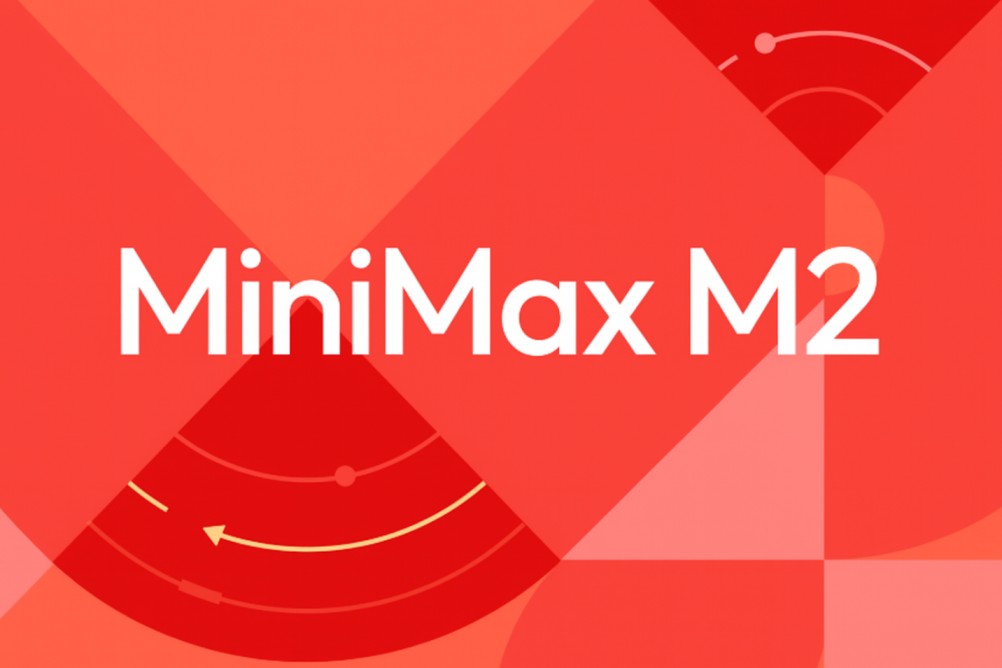Your competitors are not stuck with legacy systems. They are optimizing systems, adding more features, and getting quicker. While, on your end, your oxzep7 setup seems like from 2015. This gap widens with each passing month. Is it going to cost a lot to replace it? Sure. Rebuilding oxzep7 might take half a year and a six-figure sum.
But not when it comes to upgrading oxzep7 with Python. It’s quicker, more cost-effective, and more secure. This guide shows exactly how. We’ll walk through developing oxzep7 software step-by-step, implementing new oxzep7 Python features that actually move the needle, and upgrade oxzep7 python without the hassle. You’ll understand the costs, the timeline, and the impact before you start.
What Is Oxzep7 Software And Why It Matters
Oxzep7 is an effective software application designed to support a complex business process such as inventory control, workflow, reporting, and processing of data. Most organisations implement it as a backbone system, yet there is a fact: as-is Oxzep7 software is inherently limited. It’s rigid. It does not necessarily suit the way your business operates.
- The default features often don’t meet your needs
- Manual workarounds become the norm, wasting money and time
- Employee frustration grows as systems do not fit their workflows
- Oxzep7 Python allows competitors to get ahead faster
In reality, it is not possible to upgrade Oxzep7 to Python anymore. Python is versatile and powerful, and thus the extension of Oxep7 is not limited to its initial scope. You do not use generic software, but create your own system. You gain speed. You cut costs.
You provide your team with resources rather than challenges. Ignoring the upgrades will see businesses fall behind their competitors. The question of upgrade to Oxep7 is not whether to upgrade it or not but rather how fast you can upgrade it.
Step-By-Step Process To Develop Oxzep7 Software
Planning and Requirement Analysis
Having clarity before actual coding is a sign of success. You have to understand the ‘what fully and the ‘why’ for building any software. You can start clarification by documenting the biggest pain points.
- What’s eating the team’s time?
- What features does oxzep7 not have?
- What workflows need for automation?
Collect feedback from all users, your developers, and operations teams. Each has a unique lens to a problem. From the gaps you have identified, focus on your biggest pain points first. You can not resolve all the issues at once. Clearly define the success points you want to reach.
- Will it be faster?
- How much time will be saved?
- Will it improve data accuracy?
Planning your oxzep7 python solutions is best when business reality meets technical possibilities. It is easy to skip to coding, but you will be the only one solving a problem. Investing time in planning means you are building something that will truly be useful.
Designing oxzep7 Architecture
Your architecture is your blueprint. It shows if your upgrade will be maintainable, reliable, and scalable, or a fragile mess that no one would want to touch. Start by determining how Python will integrate with the current oxzep7 systems.
- Will you create microservices? Or direct database connections?
Each option has its pros and cons. Think about your team’s expertise, your infrastructure constraints, and your timeline. Map out the data flow: where data comes in, how it is transformed, and where it goes. Check for potential bottlenecks and failure points.
When you develop oxzep7 software with thoughtful architecture, you lay a solid foundation for upgrades and new features without breaking the existing software. It allows your team to resolve problems more quickly.
Your poorly planned architecture means you will have to recode core logic in six months. Make a sketch of your architecture and include diagrams or flowcharts so your team can visualize the entire setup.
Writing and Structuring Python Code (PEP8, Modular Design)
Now that we understand the design, we can get started on the actual building. Python’s unique strength is readability and efficiency, but only if you write it properly. It is important to follow PEP8 standards religiously—not because the style police will come after you, but because consistent, readable code is maintainable.
Break your code into modules. Don’t write one massive 5,000-line script. Instead, create focused functions and classes that each do one thing well. Use meaningful variable names. Comment your logic, and when someone reads your code six months from now, they should understand each decision you made and not just what the code does.
When you upgrade oxzep7 python capabilities, modular design is the difference between elegant solutions and technical debt nightmares. Why? Because well-structured code is easier to test, easier to debug, and easier to modify.
Integration and Testing Workflow
This is where all your hard work pays off. You need to see if your Python code works with oxzep7 and ensure it does not break any other existing systems. First, set up a staging environment that mirrors your production environment, and test it there first.
Create automated tests: unit tests for functions, integration tests for interacting modules, and end-to-end tests for a complete workflow. You cannot rely on manual testing because it is slow and incomplete. Use continuous integration tools to ensure automated tests run whenever code is changed.
When there are issues, and there will be, your tests will provide a safety net to ensure you know what broke and where. Beyond the technical stuff, involve your actual users. Have them run through the workflows with the upgraded system. They will find gaps that you missed.
They will know if the solution solves their problem. Integration is not a technical phase; it is a phase where you showcase the value of all your hard work. Get it right and your team will be ready for the change. Get it wrong and you will get the exact opposite of what you want.
Deployment and Maintenance
It’s time for deployment. Your upgrade is documented, ready, and tested. But don’t forget to approach deployment carefully. Try a phased approach—start with a pilot group for a limited user base, collect feedback, resolve issues, and then increase the group size.
- Always have a rollback plan—when things go wrong, you should have a way to go back to the previous version without losing data.
- Communicate with your team before, during, and after deployment.
- Tell the team what is changing, how they can use the new features, and where they can get help.
Even the smoothest deployment will feel chaotic if people don’t know what to expect. After deployment, you are back in the routine of system maintenance. Monitor system performance. Track system errors. Listen to user feedback.
The first week after deployment is always the most critical, then rid yourself of the issues that testing didn’t find. More routine maintenance will include regular updates, security patches, and performance optimization.
Software is not static and your oxzep7 system will need more attention long after the initial upgrade. That’s not a bug, just reality. Plan for it and budget for it, and your upgraded system will keep providing value for years to come.
How To Upgrade Existing Oxzep7 Software Using Python
Upgrading Legacy Code Or Old Versions
Your oxzep7 system could still be running on Python 2.7. Or perhaps it’s simply been patched so many times that no one remembers the original structure. And while it’s true that legacy code isn’t badly, that code still works, it’s also true that as time passes, code becomes tougher to maintain and slower to work with. Not to mention that it becomes more dangerous to work with as security holes begin to multiply.
- The first strategy when upgrading legacy oxzep7 code is to figure out what you have and read the code.
- After that, document how the various modules are connected and identify dependencies.
It will be best to not skip this step as many teams that quickly try to upgrade a system do so by breaking it and leaving it with unknown systems.
- You can upgrade oxzep7 python with no planning, it will never work and the fallout will be explosive in terms of time needed to fix it, often weeks.
The next thing to do is to create a test suite. Write automated tests that verify the current system works as is so you have a safety net. Every time you change code, these tests will verify that a change has broken something. The stronger the tests, the more confidence the developers will have in the change.
Then upgrade in small increments. It will always be best to refrain from rewriting everything all at once. Although this will extend the time needed to complete the system, it will save months of time in the future to simply debug rather than fix a broken system.
Refactoring And Performance Optimization
Unlike what many believe, refactoring does not mean changing a code’s function, but changing how a code is written. One must intermittent the speed, clarity, and easiness of the code. This is because reducing the complexity of code does provide clarity, but the code used is “unclean” and dirtyed down, which then increases cost, development speed, bugs, and reduces the experience of new developers.
- Identify the most complex sections.
- Which functions contain 500 lines?
- Which modules are tangled? Which processes are running slowly?
Identify the most complex sections. When you develop oszep7 software, clarity is just as important as functionality. Readable code is easier and faster to maintain and is also more reliable.
Optimizing code is just as important as directing function flow. While unclogging code, keep track of the time it takes to execute each part. Use time profiling tools to detect poorly performing sections. Tracking down changes, documenting, and moving code will create clearer directions for other developers.
Migrating To Python 3.X
Python hasn’t been supported since 2020. If you’re still running it, you’re vulnerable. Security patches don’t come. Libraries stop working. Performance suffers. Moving to new software oxzep7 python versions isn’t optional anymore—it’s a business necessity.
First, prepare a migration plan. Before switching to python 3, run a test in a staging environment. Use 2to3 to do some of the work on the code, but don’t rely on it entirely. Manually check all code. To identify real issues, the staging environment should match production settings exactly. Python 2to3 have differnt methods for string and text manipulation. Text, Input and Output, and Print commands may have issues with execution.
The print command has new syntax, and the entire command may fail execution. Each of these issues will need your attention, and will need to be solved in order. Plan for this as part of your budget. People usually underestimate how long migrations take.
Performing An Upgrade On New Software Oxzep7 Python
Compatibility And Version Control
Knowing what you’re working with is important before you start making upgrades. This is where version control comes in. It allows you to monitor every single change made, from each line that was tweaked to every function that was added. In the event something breaks, you can easily switch to the last working version in less than a minute.
Version control is the insurance policy against mistakes when you deploy new software oxzep7 python features. Use Git. If you’re not already, start now. Create branches for development work.
Keep the main branch stable. This simple practice prevents catastrophes. Your team can experiment in branches without risking production code.
Document versions carefully. When you deploy new software oxzep7 python features, tag that commit. Later, if a bug appears in version 2.3, you can instantly see exactly what changed from 2.2 to 2.3. This historical record proves invaluable when debugging production issues.
Pre-Upgrade Dependency And Compatibility Checks
Upgrades fail because of dependencies. Your code doesn’t exist in isolation. It interacts with other libraries, which in turn interacts with other libraries. If one of those dependencies breaks, the whole system can crash. This is why, before you upgrade oxzep7 Python, you need a dependency audit.
A dependency audit starts with listing the external libraries. For every library, check for version updates and inquire about security updates. You can use pip list to see everything you have and then use pip-audit to check for security risks. A lot of issues can be identified before the actual upgrade process starts.
Version Pinning And Dependency Isolation
Version pinning defines specific versions for files so nothing is allowed to change. If you don’t set these boundaries, one program updates and your code breaks in ways you can’t explain. Predictability is important when you develop oxzep7 software.
- Use a requirements.txt file or poetry.lock file to pin versions.
- Write them explicitly: requests==2.28.1 not requests>=2.0. When you upgrade oxzep7 python, you control exactly which versions run.
Never let libraries update automatically in production without testing first. Avoid conflicts by keeping dependencies for different projects separate. If Project A and Project B use different flowing versions of Flask, there is a conflict. This is solved by virtual environments.
Each project gets its own “Python environment”. This saves hours of debugging, preventing mysterious conflicts like cross-project conflicts.
Performance Tuning And Optimization In Oxzep7
Profiling And Monitoring
You can’t optimize what you can’t measure. Profiling means measuring how fast your code runs. Which functions take the longest? Which functions use the most memory? Where are the bottlenecks? Upgrading oxzep7 python? Profiling tells you if your changes helped or made things worse.
- Python has built-in profiling tools. cProfile tells you which functions take the longest.
- Memory_profiler tracks memory usage.
These tools are free and built-in. Use them. Your profiling data becomes the foundation for all optimization decisions.
Start profiling and measuring to get baseline numbers before you upgrade. Profile again after the upgrade to see if something got worse or if performance improved. Numbers don’t lie, and comparing before and after profiling will show the value of your efforts on upgrades.
Identifying Performance Bottlenecks
Bottlenecks are places where speed drops dramatically. A database query taking 10 seconds. A loop processing millions of records. A file operation blocking everything else. When you develop oxzep7 software, identifying bottlenecks is step one toward building a fast system.
Find them with profiling. Look for functions taking disproportionate amounts of time. If one function takes 50% of execution time, that’s your bottleneck. Focus energy there first. Some common bottlenecks are:
Slow database queries (especially N+1 queries where you loop and query repeatedly)
- Missing indexes on database columns
- Loading entire datasets into memory when you only need part of it
- Blocking I/O operations (reading files, network requests) happening sequentially instead of in parallel
- Inefficient algorithms (sorting millions of records with bubble sort instead of merge sort)
Once identified, fix the biggest bottleneck first. A small improvement to the 10-second function might save 5 seconds. That same improvement to a 1-second function saves 0.1 seconds. Prioritize impact. Your time is limited, so spend it on high-impact fixes.
Monitoring CPU, Memory, And Execution Time
When trying out new software oxzep7 python, keep track of CPU, Memory, and Runtime. These three metrics will help you evaluate whether what you are adding is manageable or adds complications.
Knowing how much CPU is being consumed indicates how much effort your code is making. If the CPU is fully consumed, it is processing intensive calculations, but if the CPU is quiet, it may be waiting on something else to complete, like a database. If you notice high CPU usage during a period of low traffic, it may signal inefficiency.
Changes in memory usage will help you identify memory bloats or if you are holding on to too much data. The memory growing without bounds is a sign of a memory leak and, memory spikes accompanying a specific task will show that there are inefficiencies. These patterns will help identify memory problems before they become catastrophic.
- Tools like prometheus and grafana make monitoring easy. Set them up. Your team will catch problems in hours instead of days. These tools visualize trends and patterns that would be invisible in raw data.
Implementing Caching And Load Management To Develop Oxzep7 Software
Integrating Redis Or In-Memory Caching
Caching stops you from having to perform the same calculations multiple times. For example, if you perform a complex database query, you can save (or cache) the result to save time if you need to perform the same query multiple times.
This is the idea behind caching when developing oxzep7 software, as it increases performance exponentially without significant rewrites.
- Redis is the best in-memory database used for caching. This is the fastest way to store data as it is stored in RAM and not on disk. When a query takes 1 second and then it hits Redis and returns in 1 millisecond, the user perceives a huge difference in performance.
Not everything should be cached, and this is a big mistake developers can make when implementing caching. Save caching for complex database queries, expensive API calls, and large calculations. Don’t cache data that is volatile, as this can lead to inconsistencies in your application.
This is a simple yet powerful technique that is often overlooked: Set expiration times for cached data. This is to avoid one user caching a profile of another user, and the data will not be refreshed for 24 hours. Set shorter expiration times for high-density data to avoid stale data.
Database Optimization And Query Management
Database queries are often the biggest bottleneck. Slow queries cripple applications. Fast queries make everything snappy. When you implement new software oxzep7 python features, database optimization ensures those new features run fast.
Profile your queries. Which ones take the longest? Start there. Use database query analyzers to understand query execution. Slow queries often reveal simple fixes.
Common query problems:
- Missing indexes on columns you filter by
- N+1 queries (looping and querying repeatedly instead of batch querying)
- Selecting columns you don’t need
- Joining too many tables
- Not limiting results (retrieving 1 million rows when you only need 100)
Keep track of how often your cache hits. For example, if your cache hits 10% of the requests, that means it is helping, but still, it could be better. A 90% hit means you are doing great. For critical operations, aim for 80% or higher. For Monitoring, you will be evaluating your caching strategy.
Load Balancing For Large-Scale Deployments
When your oxzep7 system expands, one server won’t manage all the traffic. For distributed traffic, Load Balancing is the solution.
In the case of a server malfunction, traffic continues through the remaining servers. When traffic increases, additional servers can manage the extra volume. This is the fundamental infrastructure when scaling your oxzep7 in python.
- As Load Balancers, use nginx or HAProxy which will sit in front of multiple application servers, configuring simple to your server setup teams.
Instead of making a server more powerful, it is better to scale horizontally by adding more servers. Horizontal scaling is less expensive and more dependable, which is why it is more commonly used.
Use auto-scaling to enhance your system. New servers will automatically activate when traffic increases, and will deactivate when traffic decreases. All cloud providers, including AWS, Google Cloud, and Azure, will offer this auto-scaling feature. This helps to save cash and guarantees consistency.
Upgrade Your Oxzep7 System With Techling
If your Oxzep7 software still runs on outdated infrastructure, you’re losing valuable time, money, and opportunities. The solution isn’t a complete rebuild — it’s a strategic Python upgrade that enhances performance, stability, and flexibility.
Techling helps businesses in UAE and Saudi Arabia modernize legacy systems like Oxzep7 with scalable Python solutions. Our software development team ensures smooth migrations, high-performance code optimization, and seamless integrations — without disrupting your daily operations.
Whether you need a full system revamp or want to extend Oxzep7 with new modules, Techling provides the technical expertise and project clarity to make it happen.
- Custom Python-based Oxzep7 development
- Legacy code upgrades and refactoring
- API and database integration
- Ongoing performance monitoring and support
Let’s upgrade your Oxzep7 system — faster, smarter, and more securely.
Contact Techling today to discuss your Oxzep7 Python development or upgrade project in UAE or Saudi Arabia.
FAQs
Can I Build New Oxzep7 Software Using Python Frameworks?
Yes, you can build a new version of Oxzep7 using Python frameworks like Django or FastAPI, which provide strong backend support and scalability.
What Is The Best Way To Upgrade Oxzep7 From Old Versions?
The best way to upgrade Oxzep7 is to refactor core modules gradually, migrate data safely, and modernize the UI without disrupting existing workflows.
Which Python Libraries Work Best For Oxzep7 Optimization?
For Oxzep7 optimization, libraries like NumPy, Pandas, and AsyncIO work best for performance, data handling, and faster asynchronous operations.






